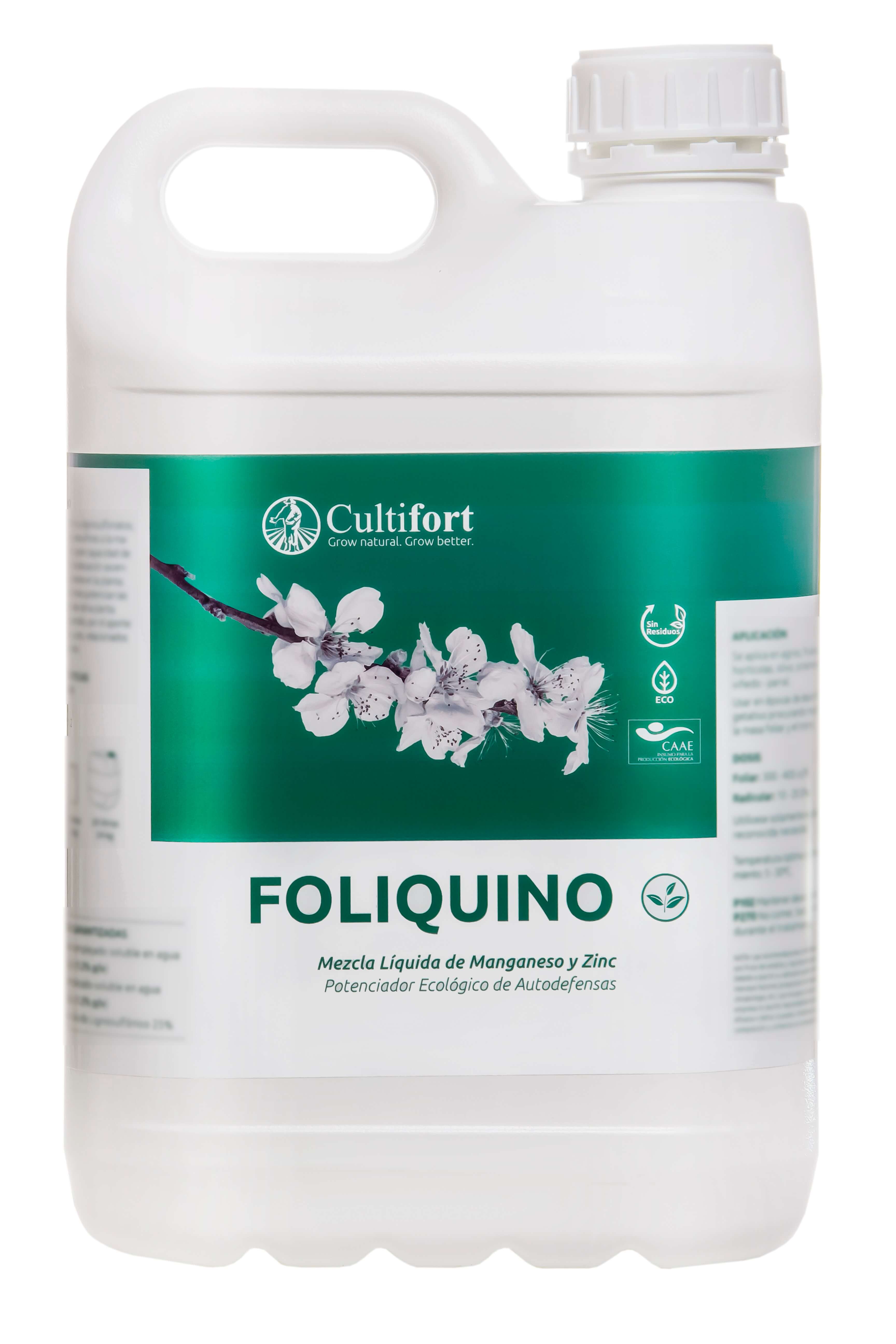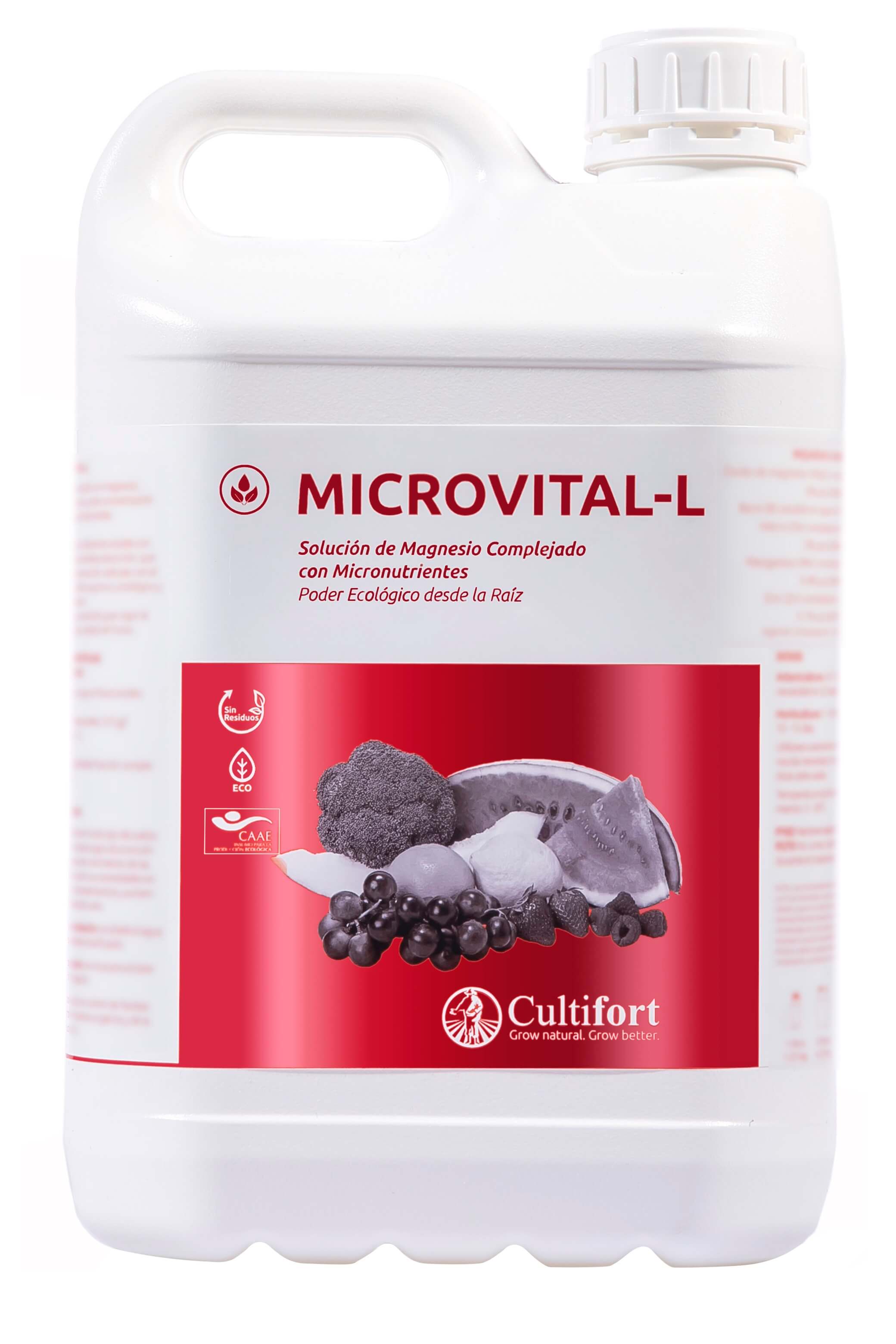INTRODUCTION
The almond tree is one of the most important fruit crops in extension, after the olive grove and the vineyard, both at Andalusian and national levels. Traditionally it has been implanted under bad conditions of the physical environment (orography, climate and soil), and it is also cultivated in dry land.
In a large part of the cultivated area these poor conditions are extreme, giving rise to a marginal crop whose productions do not exceed 200 kg / ha of kernel almonds. The low productivity of these plantations has a very important component in the insurmountable limitations of poor environmental conditions (poor soils, rainfed, etc.), but there is also another negative component due to the relatively frequent management of the cultivation (insufficient application of fertilizers and plant protection products, poor pollination, early varieties that are sensitive to frost and disease, etc.). As in other economic sectors of our society, in recent years, agriculture has had the need to evolve to guarantee the profitability of farms. The search for more productive and efficient systems has therefore been the common goal of many fruit crops.
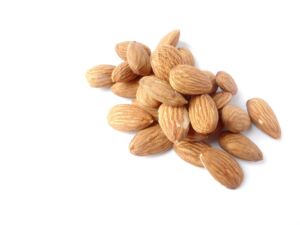
In countries with more recent implantation of the almond tree, such as the United States, we opted for an “intensive” crop, under optimal soil and climate conditions, with high irrigation provisions and highly technified. In these circumstances, they are reaching production levels of around 2,500 kg / ha of kernel almonds.
In recent years, the almond tree has gone from being a marginal crop that developed in the poor and arid soils of the Spanish fields to an alternative production to other fruit trees, olive groves, citrus fruits, even extensive herbaceous crops. To this fact we must add the increase in demand for almonds, especially in the United States, where California, the most important producing area in the world, is not capable of supplying 100% of the demand in its own market.
This situation together with other factors, such as the promotion of new late-flowering varieties (March and April) that do not suffer the effects of frost, the introduction of irrigation (generally deficient) and mechanization, have caused a significant change in the cultivation of the almond tree in Spain. These new plantations present very different characteristics from those found in the traditional ones, requiring new cultivation criteria adapted to this type of plantation.
According to FAO (Faostat), the total area dedicated to almond cultivation in 2018 was 2,071,884 ha, with Spain being the country with the most area devoted to almond cultivation with 657,771 ha, followed by the United States with 441,107 ha. Regarding production, the United States is at the top with 1,871,500 Tm, followed by Spain with 337,915 Tm. It must be taken into account that in Spain the average yields range between 350-400 kg / ha, while in the United States they reach 4,000 kg / ha, due to the more intensive nature of its plantations, the availability of water , use of high-yield varieties and their location on practically frost-free land.
In Spain, almond production is mainly concentrated in the Communities of the Mediterranean coast: Andalusia, Castilla La Mancha, Valencian Community, Murcia, Aragon and Catalonia (Figure 1). This production is highly variable due to drought and the incidence of frost, which affect flowering and subsequent fruit set.rket.
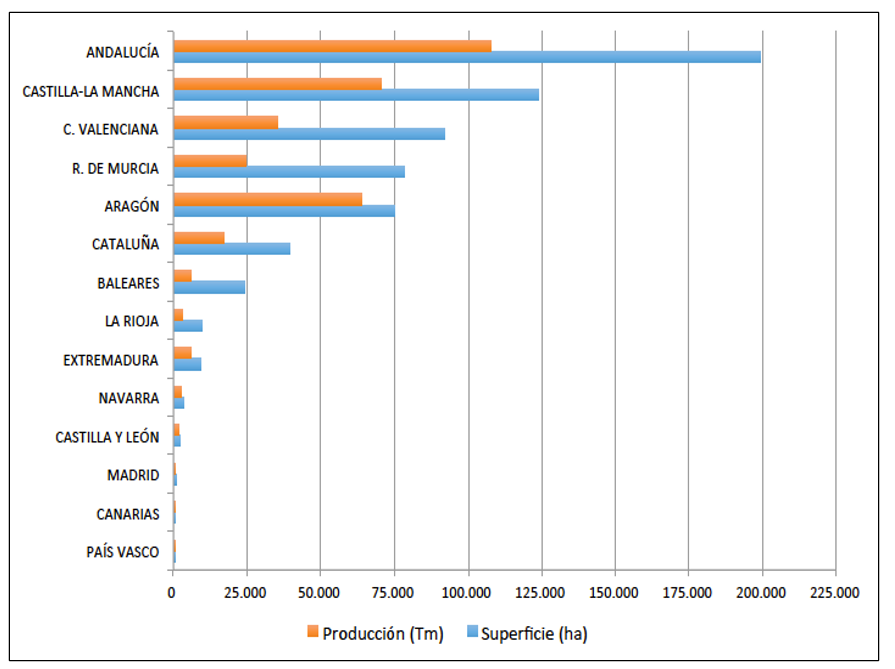
REQUIREMENTS
The almond tree is a typically Mediterranean crop, adapting to very diverse edaphoclimatic conditions. It is able to withstand the high temperatures during the summer and the intense winter cold. It can survive long periods of drought and be cultivated on very poor land. However, all these circumstances will negatively affect their production levels, these being higher, the better the environmental conditions.
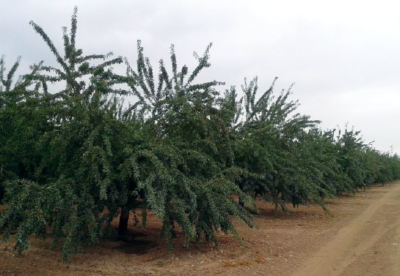
Climate
-
Temperature
For temperate zone fruit trees, such as almond trees, the optimum temperature range for photosynthetic activity is between 25-30 ºC, giving a strong reduction with temperatures below 15 ºC or above 35 ºC.
In order for the vegetative period to begin and a correct flowering and fruit setting to take place, some winter cold needs must be met and, later, some heat needs. To quantify winter cold needs, the concept of cold hours (HF) is used, which is the number of hours the tree must spend with temperatures below 7.2 ºC. The almond has low HF needs (between 100-400, depending on varieties), being similar to those of other typically Mediterranean fruit trees, such as the fig or the olive tree.
The almond tree is one of the most cold-hardy fruit species in the winter vegetative stop period, being able to withstand temperatures below -15 ºC. Freshly curdled fruits are the most frost-sensitive organs, followed by bloated flowers and buds. These organs can be damaged at temperatures slightly below 0ºC. The almond is one of the fruit trees that has an earlier flowering, although, as will be seen later, there are great varietal differences with respect to the flowering date. For this reason, in areas at risk of frost, special care must be taken in choosing late-flowering varieties (Arquero, 2013).
High temperatures can cause serious damage to plants. As previously mentioned, above 35 ºC the photosynthetic activity is seriously reduced, entering the trees (especially when they are in dry conditions) in what is known as summer vegetative stop. Higher temperatures, above 40 ºC, can cause dehydration, necrosis and leaf fall, damage to the fruit and wood burns.
-
Rain gauge
It is one of the main productive limitations. Normally, rainfall in countries with a Mediterranean climate are scarce and poorly distributed throughout the year, with a period of water deficit that covers summer and part of spring and autumn. To this fact, the frequent achievement of dry years is added.
The almond tree is a crop well adapted to rainfed conditions, although its production is increased significantly with irrigation.
-
Relative humidity
It is a factor of great importance, since very high or excessively low relative humidity (RH) values induce stomatal closure in the plant, negatively affecting vegetative and reproductive activity. Likewise, the incidence of diseases is highly favored in high HR conditions, which may become a limiting factor for the implantation of crops.
We can control, in part, the HR within the plantation using cultivation techniques. Thus, for example, the design of the plantation and the training and pruning systems can decrease the tree and canopy density, to improve ventilation within the plantation.
-
Wind
Strong winds considerably increase the transpiration rate, causing water stress to the plant. They also enhance the negative effect of extreme temperatures, lows in winter and highs in summer. Tree formation is very difficult in areas with constant winds. As occurs in rainy or foggy conditions, the activity of bees is reduced by strong winds, which negatively affects pollination. Lastly, very strong winds can cause physical damage to the grove: falling flowers and fruits, breaking branches, and can knock down entire trees (Arquero, 2013).
In areas of strong and frequent winds, the placement of guardians is necessary to guarantee the anchoring and verticality of the tree in the first years. Good planting design is also important, so that air circulation is facilitated, as well as an adequate pruning intensity, which clarifies the crown sufficiently so that it does not have a screen effect.
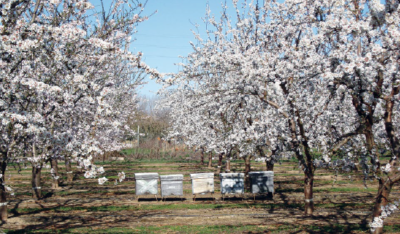
Soil
-
Physical properties
-
-
Texture
-
-
Heavy or clay soils can present problems of lack of aeration and poor water mobility. On the contrary, they have more capacity to retain water and nutrients. Silty soils have a similar problem, in addition to a poor structure that favors the formation of crusts and erosion. Sandy soils are very permeable, hardly retain water or lose it very quickly due to percolation, although they facilitate root growth and air and water movement, they are also loose and easy to till, but they are poorly fertile soils with little capacity water retention.
Heavy soils can present problems of puddling and lack of aeration, causing root suffocation to which the almond is very sensitive. To avoid this, it is recommended to use resistant rootstocks or with a superficial root system, make drains prior to planting and / or make ridges.
-
-
-
Effective depth
-
-
The effective depth of a soil is usually conditioned by the presence of a water table or a hardened horizon. The latter can be petrocalcic (calcium carbonate accumulation), argillic (clay accumulation), or rocky parent material. All of them represent a physical impediment to the deep development of the roots, influencing their capacity to extract water and nutrients from the soil. This conditions the vegetative and productive states of the crop, especially in dry land.
Deep subsoiling work prior to planting can greatly improve useful depth by breaking petrocalcic horizons, as well as the working sole or compaction that the soil may have.
The almond tree can be grown in shallow soils, although it must always be borne in mind that, at a greater effective depth of the soil, we will have greater root development and a higher availability of water and nutrients, considerably improving the vegetative and productive states of the tree.
-
Chemical properties
Among the most important chemical properties of the soil are (FAO, 1984):
-
-
- Organic matter, the optimum of which should be around 2%, being common in many soils where the almond is cultivated, not exceeding 1-1.2%. Therefore, organic fertilization is one of the aspects to be improved in cultivation.
- Carbonates, have a positive action on the structure of the soil and on the activity of microorganisms, but can decrease crop yields by limiting the response to fertilization when they are in concentrations higher than 20%.
- Active limestone, they are fine carbonate particles, very chemically active and that can interfere with the normal development of the almond when they exceed concentration values of 9%
- pH, greatly influences the development of the culture, determining the solubility of the nutritive elements, the development of microorganisms, the speed of the humification and mineralization processes, and the capacity of adsorption of cations in the exchange complex. The almond tree tolerates soils with a pH between 5.5 and 8.4.
- Salinity, measured through Electrical Conductivity (EC), which determines the main cations (sodium, calcium, magnesium, and potassium) and anions (sulfates, chlorides, carbonates, and bicarbonates) in the soil. The almond tree is a relatively tolerant crop to the salinity of the soil, being able to develop up to values of 4 dS / m of CE, however, above 1.6 dS / m it would begin to decrease the productive capacity of the crop.
- Fertility levels. A C / N ratio of 10-12 with a total nitrogen percentage (Kjeldahl) of 0.11-0.2, would be optimal for the almond.
-
Irrigation water
The main negative consequences that the use of poor quality irrigation water can present are salinization and soil sodification, as well as phytotoxicity in the plant, which can produce severe damage to the crop and even seriously alter the physicochemical characteristics of the floor.
A sodium absorption ratio (RAS) greater than 9, chlorine levels above 355 mg / l and boron levels above 3 mg / l, suppose a high degree of restriction for almond cultivation. The EC of irrigation water will affect to a greater or lesser extent depending on the RAS, although we can place normal values of this parameter in the range between 1.1 and 3.2 dS / m (Micke, 1996).
VEGETAL MATERIAL
As in other fruit species, the almond tree is made up of two individuals: the variety, which represents the aerial part of the tree, and the pattern or rootstock, which constitutes the root system.
The current genetic improvement programs were created with the aim of contributing to increasing the competitiveness of the plantations, by improving the quality of the plant material.
Patterns
When choosing a pattern, the following aspects, among others, must be taken into account: compatibility with the variety, homogeneity of the plant, vigor, longevity of the plantation, behavior against adverse edaphic conditions, adaptation to extreme climatic conditions, adaptation to the cultivation system (irrigation / rainfed, replanting, etc.), resistance to pests and soil diseases, influence on productivity and characteristics of the fruit.
The most used patterns in the almond tree and its main characteristics are (Arquero et al., 2013):
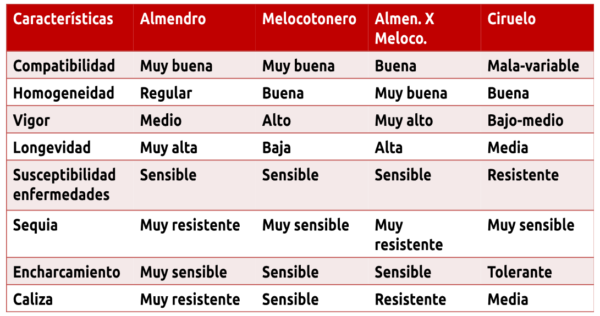
Table 1. Most used almond patterns and their main characteristics.
Taking into account the requirements regarding the physical properties of the soil and the sensitivity of the almond patterns to waterlogging, at Cultifort we propose the use of OXIFORT to prevent and / or recover almonds that have suffered root suffocation. It is a long-lasting and effective soil oxygenator, which in addition to improving aeration and water circulation in the root zone, providing sponginess and porosity to the soil, stops the development of anaerobic microorganisms favoring the aerobic and beneficial microbiota, improving thus its fertility.
Variety
The availability of quality plant material is a basic factor in establishing new plantations. Traditional varieties have remarkable characteristics, but also important limitations. Thus, for example, Marcona and Desmayo Largueta, one of the most widespread, produce fruits highly appreciated by the Spanish consumer, however they are early flowering (susceptibility to frost damage), demanding pruning, sensitive to diseases, etc.
This shows that the variety with the highest production potential does not always achieve the highest profitability. Frost, incidence of pests and diseases, pruning costs, etc., negatively affect the production levels of the almond tree. Therefore, the specific objectives of genetic improvement programs have been geared towards obtaining new varieties taking into account characteristics such as:
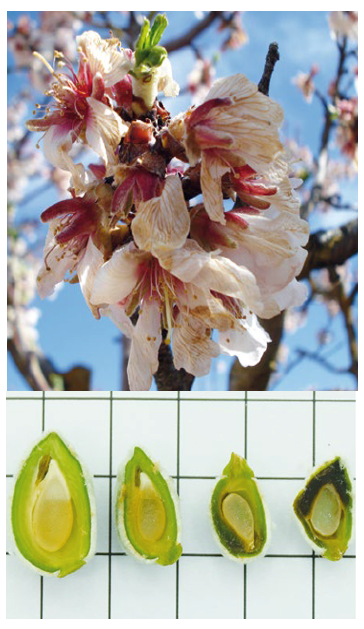
Figure 2. Detail of damage caused by frost on flowers and fruits.
-
Phenology
At Cultifort we have already dealt with frost problems in woody crops in previous Webinars, where we developed all the principles used to control low temperatures, both before and after planting, including the application of nutritional and / or nutritional products. biostimulants. In this case, our recommendation was that of BVC 2021, metabolic activator of the plant even in adverse conditions (temperature, lighting, wind, etc.), based on amino acids and emulsion algae. In addition to increasing resistance against low temperatures and against adverse weather conditions, in general, it helps to overcome stressful situations. It increases the photosynthesis rate, improves the assimilation and translocation of nutrients, increases the synthesis of amino acids, peptides and proteins and delays leaf senescence, among many other effects.
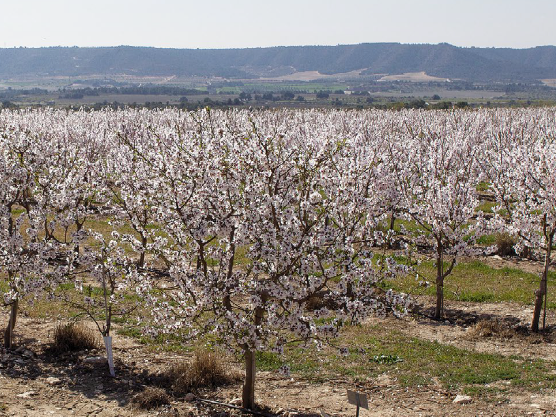
The flowering date has a genetic and an environmental component. Depending on the existing thermal regime, the flowering season for the same variety and year will be different in areas with different climatic conditions. For the same reason, for the same variety and location, very different flowering dates can be recorded in years with very different climatology (Arquero et al, 2013).
The choice is relatively frequent, in self-incompatible multi-varietal plantations, of varieties that do not fully coincide on the date of flowering, which causes poor pollination and reduced harvest. For all this, the flowering season is an aspect to consider in the varietal choice.
Another important phenological aspect to take into account is the time of maturation, especially in multi-varietal plantations, to establish the desired degree of staggering of the harvest.
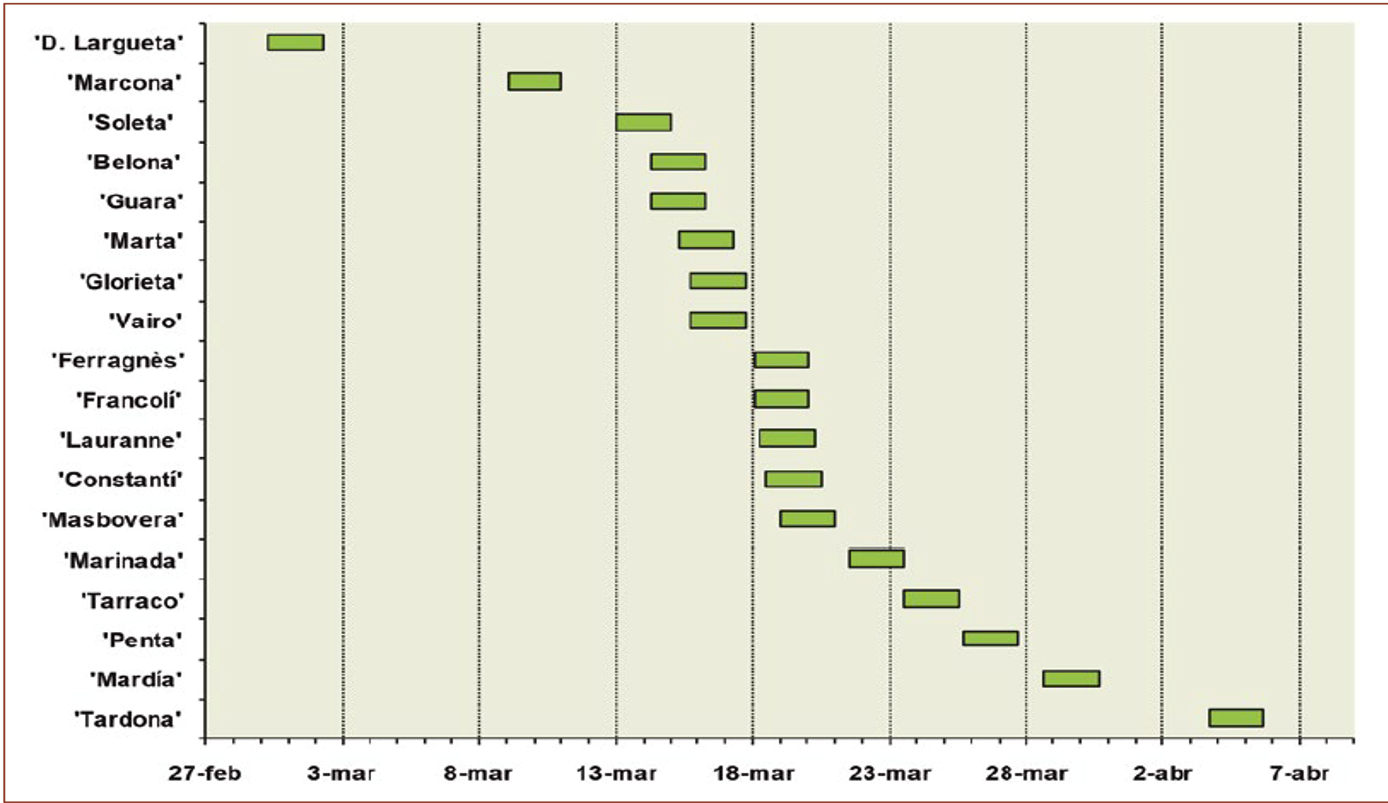
Figure 3. Full flowering date of different almond varieties in Lerida. Data: IRTA (5-year average).
-
Compatibility
The almond tree is a species with full flowers (endowed with the male organs, stamens; and female, pistils) and entomophilic pollination through insects (mainly bees), with self-incompatible and self-compatible varieties. In self-incompatible varieties, fertilization of flowers with pollen of the same variety is not feasible, while in self-compatible varieties, self-pollination is possible (fertilization of the ovule with pollen of the same variety). If the self-compatibility character is complemented by a floral morphology that has an adequate disposition of the anthers with respect to the stigma, in such a way that the pollen grains can be positioned in the stigma spontaneously, without the need to be transported by vector insects, the character of autogamy or self-fertility is achieved for a variety (Figure 4).
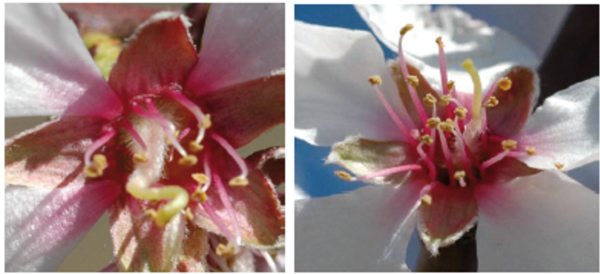
Figure 4. Floral morphology that prevents autogamy (left) and floral morphology that allows self-fertility (right).
The character of self-incompatibility requires the implantation of at least two varieties that are intercompatible with each other and also coincide in flowering, being advisable to put at least 30% of the surface of the variety or pollinating varieties and the rest of the main variety. Likewise, the presence of bees is strictly necessary and, in addition, there are good climatic conditions (absence of rain, wind and fog and low temperatures) in the flowering period, which allow a good activity of the bees (Archer et al, 2013).
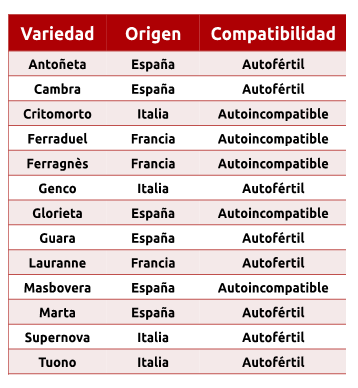
Table 2. Origin and compatibility type of the main late flowering varieties.
With self-compatible cultivars, single-varietal plantations can be made. If they also have the character of self-fertility, we make pollination less dependent on the action of vector insects. Therefore, the character of self-fertility is essential for single-varietal plantations and / or with little presence of bees.
The recommendation of Cultifort to improve the activation of the vegetative cycle of the almond tree, achieve a higher quality flowering and a more effective fruit set, is the application of FOLIQUINO. It is an energy-rich biostimulant that, thanks to its formulation with organic acids, makes it assimilable both by leaves, branches and woody parts and by the root system. Its operation is based on the powerful systemic action of aluminum lignosulfonate, whose mobility, both upward and downward within the plant, helps to balance the aerial part and the root system, improving the sprouting of latent buds and, therefore, achieving a flowering of greater quantity and quality. Among its functions at the physiological and metabolic level, it stands out for the increase in the synthesis of different metabolites, mainly polyphenols (activation of the shikimic acid cycle), but also of phytoalexins. Both make up part of the plant’s natural defense mechanisms, polyphenols as natural antioxidants, and phytoalexins as antimicrobial compounds with fungicidal and bactericidal action, which help limit the development and proliferation of pathogens. FOLIQUINO also intervenes in the construction of new cellular structures and in the regeneration of vascular tissues, making it an important ally in the prevention of wood diseases. It also favors the penetration of nutrients and improves the systemic action of phytosanitary treatments.
-
Ease of pruning
In well-managed irrigated plantations, the trees become very large. The limiting factor is the lighting and not the lack of water as in the traditional dry land. Where there is no light, no fruit is produced and the branches age more quickly. The varietal vigor, together with the almond harvesting machinery used, will determine the planting framework.
Both vigor and bearing will determine the type and severity of pruning to be applied to each variety. When working with less vigorous and very early varieties at the start of production, the formation of a good tree structure should take precedence over production, to avoid possible exhaustion of the tree. On the contrary, in vigorous varieties, the formation pruning can be of less intensity, to force a rapid entry into production. In addition, in varieties with a closed bearing, the opening of the main branches must be forced. On the contrary, in varieties of very open size, the most closed main branches will be prioritized (Miarnau et al., 2015).
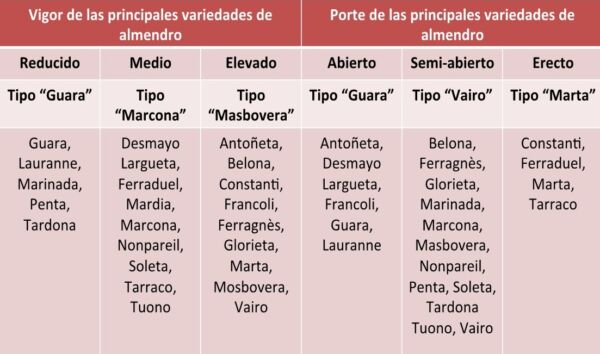
Table 3. Vigor and size of the main almond varieties.
-
Disease resistance
There are clear varietal differences regarding disease susceptibility. This must be borne in mind in those areas where environmental conditions are favorable for the incidence of diseases, since their presence requires a greater number of phytosanitary treatments, and if good control is not achieved, the damage caused may be very considerable.
Figures 5 and 6 show the varietal differences regarding the incidence of Chancre or Fusicoccum (Phomopsis amygdali), the Ocher Spot (Polystigma amygdalinum), (Miarnau et al., 2015).
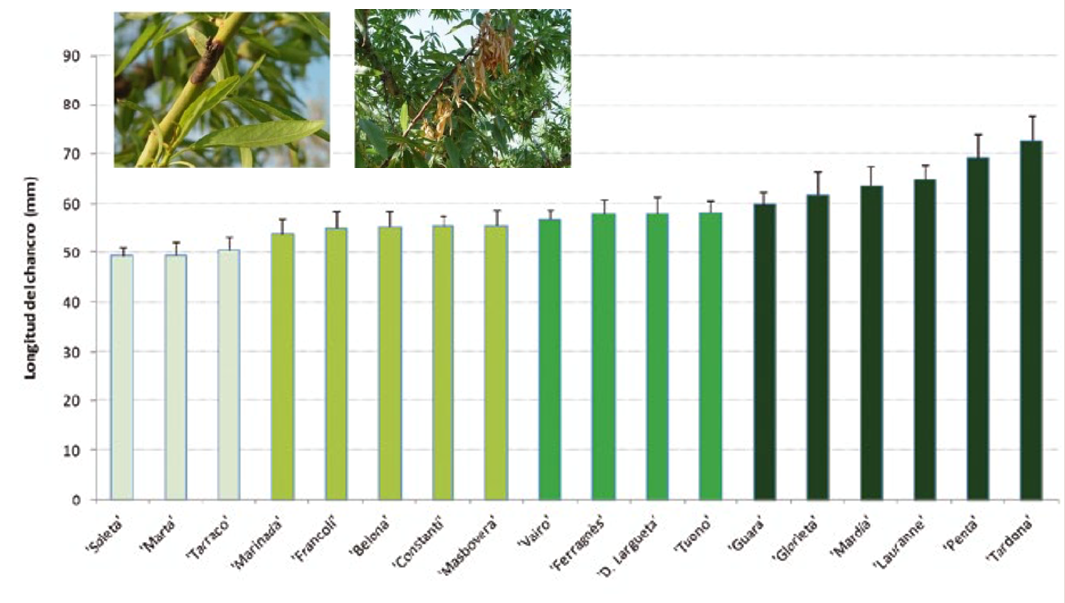
Figure 5. Susceptibility of different varieties of almond to Chancre or Fusicoccum. Data: IRTA (3-year average)
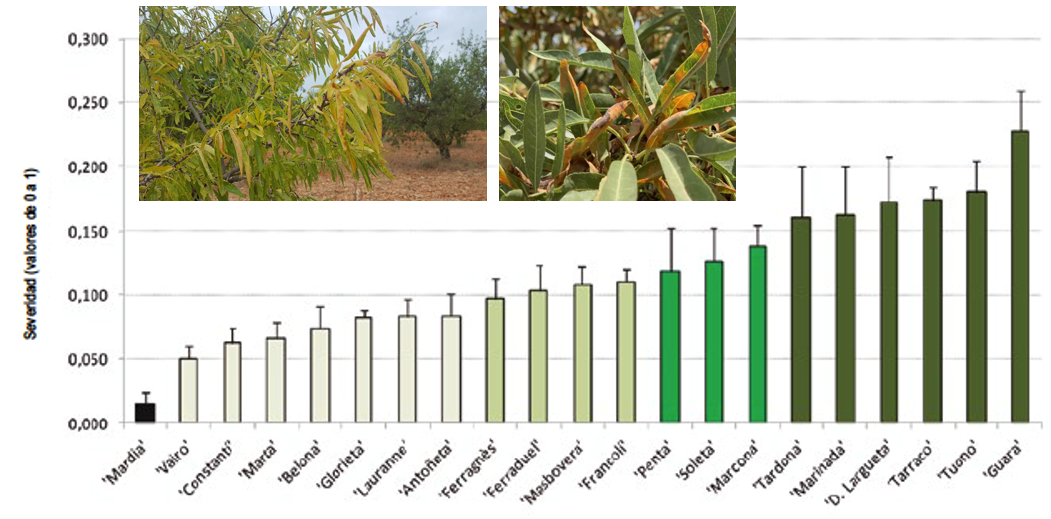
Figure 6. Susceptibility of different varieties of almond to Ocher Spot. Data: IRTA (3-year average).
-
Productivity
There are clear varietal differences regarding production. Early flowering cultivars tend to have lower productivity, and late flowering ones are clearly less productive. Table 4 shows the productive behavior of the main late-flowering varieties.

Table 4. Productive behavior of the main late flowering varieties.
The almond tree is one of the species with the highest earliness of entry into production, being able to reach considerable harvests by the 3rd – 4th year.
However, it is necessary to differentiate the varietal behavior regarding the earliness of entry into production with that of the level or productive potential in the adult state, since they are not always related. Thus, there are very early varieties, but later their productive potential in adults is low, and vice versa.
Another important productive aspect is the degree of alternation of production or aging (Figure 7). It is always advisable that a variety maintain a regularity in the harvests (Arquero et al, 2013).
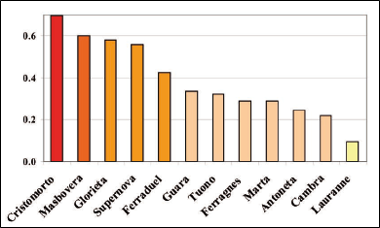
Figure 7. Degree of maturity of the main late flowering varieties. Data: IFAPA (mean of 8 years).
-
Characteristics of the fruit
Commercially it is desirable that the almond has a high weight of pip and a low percentage of doubles, although currently these values do not usually influence the purchase price from farmers.
The commercial value of the cultivation of the almond has the seed of the fruit (almond grain, seed or pip). The farmer delivers the almond in shell, once the rind of the fruit has been removed. A sample is taken from the consignment delivered and the weight of the pip or seed is determined with respect to the weight of the whole fruit (almond shell). This ratio, expressed as a percentage, is called the husk / grain yield, serving to determine the total amount of seed, on which the settlement is made.
It is common to relate a higher husk / grain yield with a better productive level. This statement is wrong, since the productive level is given by the weight of the nugget produced per unit area, being independent of the husk / grain yield. Thus, there are varieties such as ‘Cristomorto’, which have high productivity with a low performance; while others, such as ‘Supernova’, present a high yield but a medium / low production (Arquero et al, 2013).
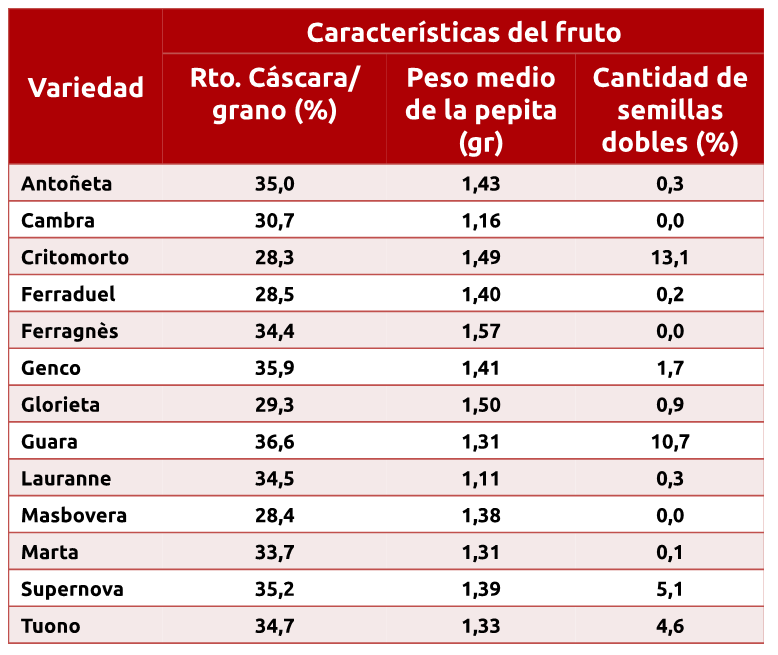
Table 5. Fruit characteristics of the main late flowering varieties. IFAPA data (mean of 8 years).
NUTRITION AND FATTENING TREATMENTS
Traditionally, it has been considered that through the fertilizer the amounts of nutrients that the harvest extracted should be returned to the soil. This method of subscriber restitution has serious deficiencies that make it inadvisable, the two most important being the lack of response to the subscriber when an item is available in sufficient quantity in the soil solution, and the non-quantification of luxury consumption.
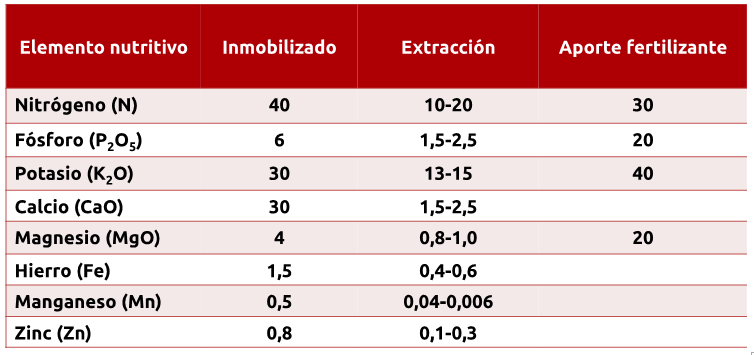
Table 6. Subscription criteria for restitution, immobilizations, extractions and fertilizer needs (kg / ha) per ton of almond in shell.
Currently, it is considered that the annual fertilization plan for woody crops must be based on the diagnosis of the nutritional status of the plant, determined by foliar analysis, and must be complemented with a series of information or references, such as: soil characteristics , symptoms presented by the plant, vegetative and productive states and crop management.
Foliar analysis is the best method to diagnose the nutritional status of the tree. It allows to detect low levels of nutrients, before deficiencies occur, establishes the response to the applied subscriber and detects toxicities by chlorine, boron and sodium.
The result of the foliar analysis has to be compared with the critical levels of each one of the nutritional elements. Table 7 shows the values established for the almond tree. Concentrations below the adequate level cause a decrease in growth and production.
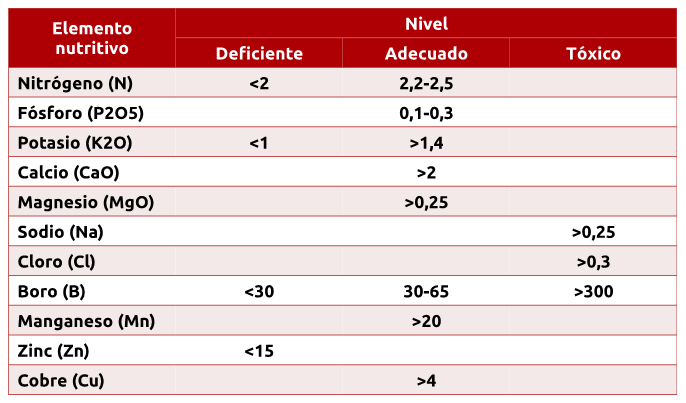
Table 7. Critical levels of nutrients in almond leaf for the month of July.
The fertilization of the almond tree is carried out, fundamentally, by means of contributions to the soil or by foliar applications.
The traditional and most widely used form today is direct application to the ground. The fertilizer thus supplied passes into the soil solution from which it will be absorbed by the roots. This system is the one with the lowest efficiency, expressed as a percentage of the element absorbed by the plant with respect to the total applied. The main losses are due to deep washing and volatilization to the atmosphere. In order to improve the efficiency of the soil fertilizer, some application criteria or recommendations must be followed. The fertilizer should be done when the tree has vegetative activity and, therefore, with greater capacity for nutrient absorption, being recommended to divide the application into two or three moments throughout the vegetative period. The fertilizer has to be distributed evenly over the entire surface, since the root system, in adult plantation, explores the entire land. To avoid losses due to volatilization, localized applications will be made, incorporating the fertilizer into the ground by means of a superficial work, or, it will be applied on the surface immediately before the rains, so that the water incorporates it into the soil.
Through foliar fertilization, the subscriber is applied, by spraying, in the form of a nutritive solution to the tree canopy, being absorbed by the leaves. This system allows a quick and efficient use of nutrients. It is especially recommended for the contribution of micronutrients and in “shock” applications, to have a prompt response. For greater efficiency, applications must be made with the tree in vegetative activity and when the leaves are fully expanded; not having to deal with strong winds or high temperatures.
In plantations with localized irrigation it is recommended to apply the fertilizers dissolved in the irrigation water, a technique known as fertigation. This system is the one with the lowest application cost and the one with the highest efficiency, since the fertilizer is located in a humid area with a high concentration of roots, so that the absorption of nutrients by the plant is maximum. Furthermore, when it is incorporated with irrigation water, the loss of fertilizers by volatilization is minimal. It is advisable to apply fertilizers with the shortest possible frequency, which can be weekly or daily, throughout the entire irrigation period. In this way, the concentrations of fertilizers in the water are low and constant levels are maintained in the soil (Arquero and Serrano, 2013).
It is very important to divide the fertilizer applications, especially nitrogen, which is specifically recommended in spring, summer and autumn, taking advantage of post-harvest fertilization to provide or restore the nutrients that have been lacking in foliar analysis and to ensure the levels of those elements. that will be demanded by the almond tree in greater quantity in the next flowering and beginning of the vegetative growth. The potassium contributions are essential to obtain good, uniform productions, with fruits of good size and to guarantee the productive levels of the following year.
In any case, the products, concentrations, forms and times of application allowed or recommended for fertilizer applications must always be respected.
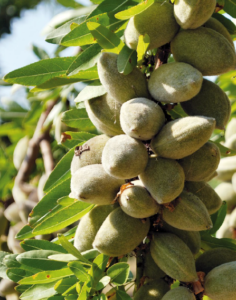
One of the bases of the nutrition of the almond tree is the organic fertilization, pillar on which lies the improvement of the communication between the inert or mineral part of the soil and the plant. At Cultifort we have the best product on the market, within its category, to cover the requirement of organic fertilization. This is MICROVITAL – L, formulated more than 35 years ago and whose results guarantee its good reputation. It is an organic bioactivator of the soil, of plant origin, rich in magnesium, microelements, organic complexes and flavonoid molecules. In addition to beneficially influencing the physical-chemical and biological aspects (activates the microbiota) of the soil, it avoids the deficiencies of magnesium and of the main micronutrients, it induces the formation of roots and the metabolic activity of the plant, it protects against harmful effects from ultraviolet radiation thanks to flavonoid molecules (polyphenols), which also exert their antioxidant activity, delaying leaf senescence, protecting the plant against adverse conditions and giving it greater resistance against diseases. The organic compounds provided with MICROVITAL – L, not only complex the nutrients contained in its formulation, but also the nutrients present in the soil, of little mobility or blocked, substantially improving the fertility of the medium and the nutrition of plants.
Treatments focused on the maturation and fattening of the almond must be taken into account whenever we want to obtain high productions. It should be borne in mind that from spring and after the petals fall, the almond grows with great speed and any alteration can affect it. If we have had a large fruit set, it is normal for the tree to begin purging the almond, that is, for the small almond to start falling. This is normally due to various factors such as:
- Variety: there are varieties that throw more flower than fruit, and others that throw small almonds.
- Nutrition: the almond tree has nutritional reserves of macro and micronutrients that come from the previous year, therefore, if the reserves are short, it is logical that it throws more almonds. Hence the importance of fertilization in the last phase of the cycle in the post-harvest. Applying only nitrogen is not enough.
- Irrigation: If there is an excess or defect in the irrigation, it is also a cause of excessive fall of almonds.
- Wind / Hail: logically here we will not be able to influence anything, just have the tree with good reserves so that it costs more work to throw it away.
Regardless of the tree curd, we will always have to deal with specific products for almond fattening at this time, if we want to achieve large productions. The reasons are the following:
- If we have had a poor fruit set, at least the almond that we have has a large caliber, and consequently we have kilos of pips that we can defend the year.
- On the contrary, if we have had a large curd and we do not attend the extra nutritionally, the almond will remain small and the kilos will be less than expected at first.
- With small increases in production, applications are fully
- In varieties that carry a lot, and the almond is not very large (Penta), it is highly recommended.
The time and duration of the treatments will depend on the variety, the climate, the area, etc. The general rule would be to start applying them when the almond is the size of at least a 20 cent coin, and we would have until the almond shell becomes hard (as long as the milky pip is). At this time the hide will no longer grow, and consequently the kernel of the almond will no longer grow.
In the Cultifort catalog we have different formulations specially developed for the ripening and fattening stages of the fruits.
MACROFOL ROJO PLUS is a soluble NPK, with a 15-5-30 balance, formulated with magnesium and micronutrients. Its composition is designed to promote the development, fattening, ripening and consistency of the fruits, increasing the storage of carbohydrates and proteins in them. It also supposes an ideal nitrogen contribution, with a concentration that does not negatively affect the ripening of the fruits, during the phenological stages in which its application is most recommended. MACROFOL ROJO PLUS is a highly soluble product, very stable and that behaves well against mixtures with other products on the market, does not form lumps during its dissolution, has a slightly acidic pH and, best of all, it is a chlorine-free fertilizer.
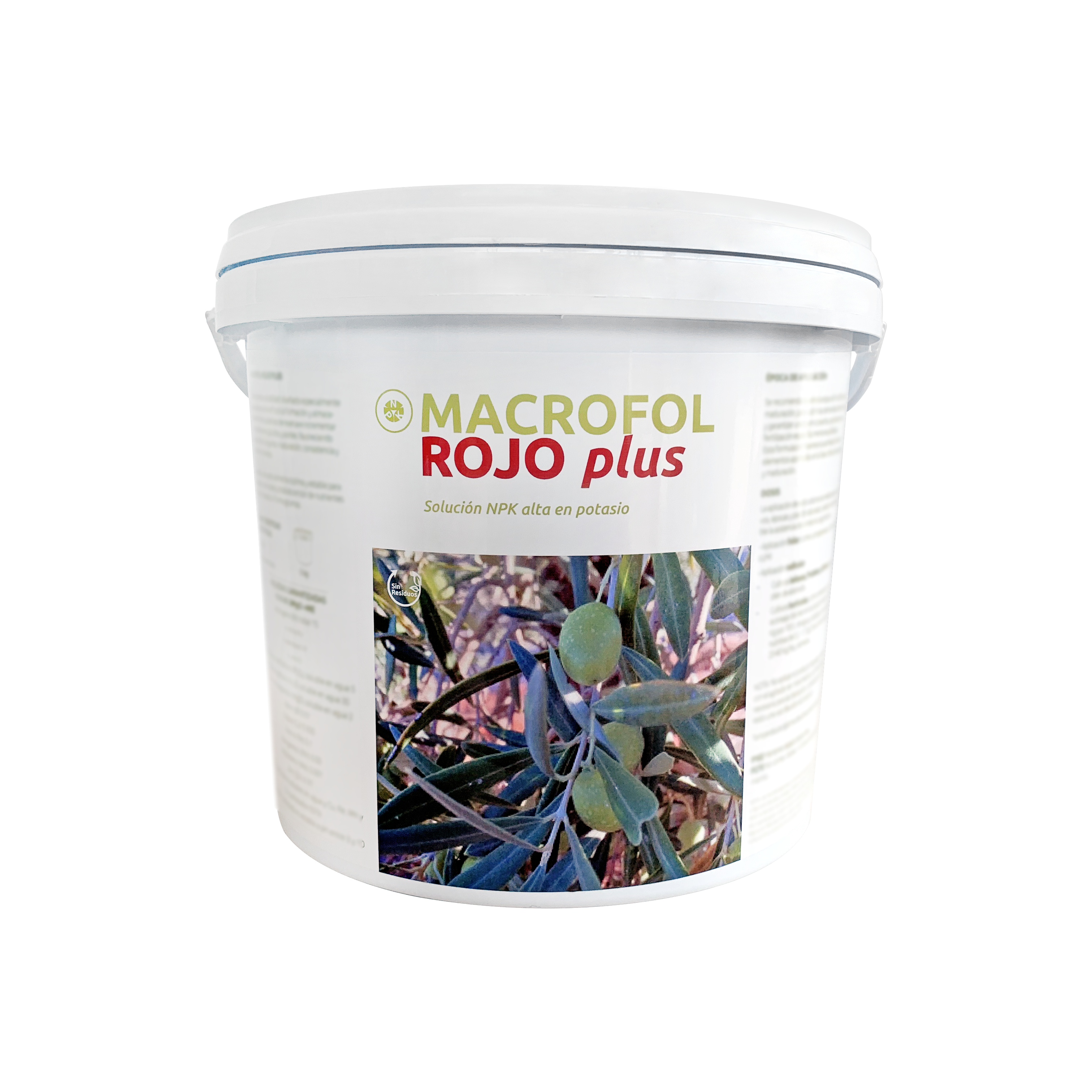
CULTIFORT K and CULTINEUTRAL K are two high-rich, chlorine-free liquid formulations of potassium. They are designed to favor the fattening and ripening process of fruits, increasing their size and uniformity, increasing the synthesis and accumulation of sugars and improving their color and firmness. Thanks to the technology of their formulation, they are quickly assimilable products, with high absorption, mobility and translocation inside the plant. They are similar in terms of richness and their differences lie mainly in pH, 9 in CULTIFORT K and 6 in CULTINEUTRAL K, and in density, 1.5 and 1.24kg / l, respectively.
REFERENCES
Arquero, O., Casado, B., Fernández, JL, García, A., Lovera, M., Ramírez, A., Romacho, FJ, Romero, J., Salguero, A., Serrano, N. and Viñas, M., 2013. Plant Material. In Manual del Almendro (pp. 22-31). Sevilla Spain). Ministry of Agriculture, Fisheries and Rural Development. Junta de Andalucía.
Arquero, O. y Parra, M.A., 2013. Environmental Requirements. In Manual del Almendro (pp. 16-21). Sevilla Spain). Ministry of Agriculture, Fisheries and Rural Development. Junta de Andalucía.
Arquero, O. and Serrano, N., 2013. Fertilization. In Manual del Almendro (pp. 52-54). Sevilla Spain). Ministry of Agriculture, Fisheries and Rural Development. Junta de Andalucía.
Brown, P.H. and Uriu, K., 1996. Nutrition deficiencies and toxicities: Diagnosing and correcting imbalances. In Micke, W.C. Almond Production Manual (pp.179-188). University of California (USA), Division of Agriculture and Natural Resources.
Grasselly, C., and Duval, H., 1997. L’amandier. Paris: Ctifl. Ed.
MAGRAMA, 2018. Ministry of Agriculture, Food and Environment. Statistical Yearbook 2018.
Miarnau, X., Torguet, L., Batlle, I., Romero, A., Rovira, M. and Alegre, S., 2015. Agronomic and productive behavior of the new almond varieties. National Symposium on Almond and other Nuts. September, 2015. Lérida, Spain.
Micke, W.C. 1996. Almond Production Manual. University of California. Division of Agriculture and Natural Resources.
Vargas, F.J., Romero, M., Clave, J., Batlle, I., Alegre, S. and Miarnau, X., 2009. Important traits in IRTA´s new almond cultivars. 5th International Symposium on Pistachios and Almonds, October, 2009. Sanliurfa, Turkey. Acta Horticulturae, 912: 359-365.



